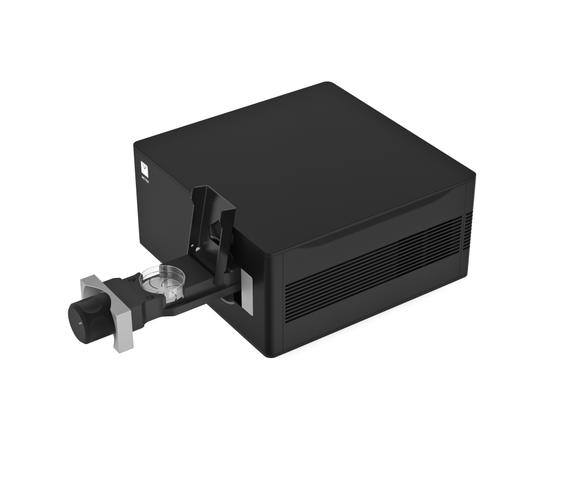Webinar
The Role of Water Activity in Coffee Quality

Like many other food products, coffee’s quality is closely tied to its water activity levels. Join us for an in-depth look at how water activity can ensure excellent coffee.
Topics covered include:
- Water activity vs. moisture content
- Basics of water activity
- How to measure water activity
- Water activity in roasted coffee
- Water activity in green coffee
- Coffee beans and respiration
- How water activity influences coffee quality
- Fats absorbing tastes/odors
- Chemical changes
- Loss of organic material
- Water activity, moisture content, and scores
- How water activity extends shelf life
- How water activity affects quality during drying and storage
Presenter
Wendy Ortman, METER research scientist, and Ian Fretheim, Café Imports, discuss the role of water activity in coffee quality.
Water activity and coffee quality
This webinar dives deep into how water activity and coffee quality intersect, examining the processes and outcomes for both commodity and specialty coffees. The coffee industry is divided into two segments: commercial (also known as commodity or bulk) and specialty. The water activity measurements and processes differ for each side of the industry.

Water monitoring/activity and shelf life
The goal for all coffee, roasted or green, is to maximize shelf life. Because coffee is a hygroscopic material, understanding and managing water activity is crucial in producing quality coffee. Moisture content is a quantitative measurement and monitors only the amount of water in a substance. Water activity, on the other hand, is a qualitative measurement and assesses the activity (or energy status) of the water. There are two primary ways of measuring water activity: the dewpoint methodology—which measures vapor pressure—and electrical properties–based sensor, used for measuring the electrical properties in the water.

Water Activity and Coffee: Respiration in Specialty Coffee
Green coffee respiration looks specifically at hedonic qualitative and quantitative measurements and how those values impact flavor attributes. Water activity in green coffee specifically impacts degradations in the organic acids of sugar, which in turn affects the pricing of the product.
Developing specialty coffee is a non-linear process and involves plenty of trial and error to produce a unique, quality product. With green coffee respiration, manufacturers want to preserve the “liveness” of the coffee as much as possible, meaning that the starches, carbohydrates, fats, and proteins need to be maintained as much as possible. The green coffee is essentially a living seed that needs to be maintained.
Examining a large sample size of coffee beans, for example, would be an ideal way to identify patterns and trends. Any number of variables could affect the quality of the coffee, including but not limited to statistical noise shipment, air roast variation, moisture content, coffee variety, processing method, and variation in water activity. The ultimate goal would be for specialty coffee makers to identify how the water quality and activity affects the shelf life of the coffee and the quality of the product prior to shipment. Monitoring all of these factors is what the speaker calls “living on the edge of respiration.”
How Water Activity Can Affect Coffee Quality
Using water activity as a metric for gauging coffee quality is not a standard within the industry, though it does increase the likelihood of coffee lasting longer. The more we study water activity and its intersection with coffee, the more we understand that water activity is central to cup quality. While water activity is fundamental to producing quality coffee, there is no one perfect water activity level for great coffee.

To determine the ideal water activity, you need to first determine the type of coffee you want to produce. Deciding on what characteristics you want your coffee to have will tell you what water activity levels will be ideal. In coffee production, water activity checks are performed in at least three different spots: origin/pre-shipment, arrival at the warehouse, and a spot cup. These checks take place over a seven- to eight-month period. With aggregated data, we can look for trends that show when coffee quality declines (as well as determine whether the decline is shallow or steep).
Volatility and Viability
While there is no one ideal value when it comes to water activity and coffee production, higher water activity does lead to an increased risk of volatile coffee quality. Variations in water activity and unforeseen changes in the production process can affect other components and reactions in the product. A volatile cup of coffee is not inherently bad; the blend could make for an amazing cup of coffee that just doesn’t have a long shelf life or could be impacted by more factors than other blends. Lower water activity can serve as a quality buffer when transporting green coffee. Beans containing different water activity levels, transported in two loads, showed that the beans with the lower water activity better weathered shipping delays.
Managing levels of water activity can be tricky when producing and shipping green coffee. Water activity that is too low will lose the living component of the bean, while water activity that is too high will catalyze reactions that we don’t want happening. Viability in specialty coffee production is a fine balancing act.
Collaboration and Looking Ahead
The speaker collaborated with Bata Carlos, testing several micro lots of green coffee. This allowed them to analyze specific data and control more variables. Further research into water activity will hopefully lead to more sophisticated methodology for drying and producing coffee.

